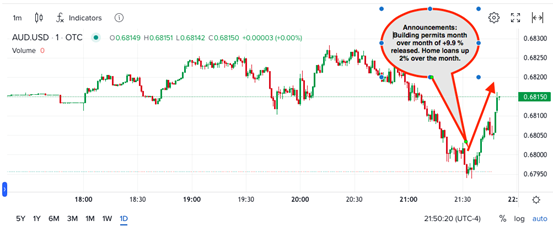- Global recessionary fears hang over markets
- Positive economic data points surprises are most welcome
- Why markets are up this morning, and what to watch out for in the week ahead
A slow start to the week as the US is currently celebrating its Independence Day weekend.
Monday’s data
Recently there has been a lot of talk of an international inflationary-led recession spilling over into the Australian markets, best illustrated in the struggling home building sector. Home builders are feeling the pinch as the combination of rising raw materials costs overwhelming fixed completion revenues leave many underwater.
In times like these, when positive surprises in the economic data are published, the markets tend to react quite favourably, particularly when little else is happening.
With that in mind, the Australian Bureau of Statistics released its building permits and home loan results for May. They beat expectations this morning with a healthy 9.9% increase over April, with the consensus being for a decline of 1.8%. Home loans were also up 2.1%, with an expectation of being down 2% from April to May.
Top Australian Brokers
- Pepperstone - Trading education - Read our review
- IC Markets - Experienced and highly regulated - Read our review
- eToro - Social and copy trading platform - Read our review
On top of a drop in the national average of house prices, buyers have had to contend with the heightened credit risk of builders, plus rising borrowing costs. Yet some regions like South Australia are bucking that trend, and according to the data this morning, the housing market still has some mileage in the tank.
The S&P ASX/200 bounced 1.2% at the open, with the banks enjoying a rare window of positive news, Westpac Banking Corp ASX:WBC (WBC) is up 1.3% in morning trade, and Commonwealth Bank ASX:CBA (CBA) rising 1.2%.
In thin trading, the Aussie dollar reacted favourably to the data, ratcheting up 25 basis higher from the open.
Building materials supplier James Hardie ASX:JHX (JHX) climbed 4.5% at the open, and competitor Boral Ltd ASX:BLD (BLD) followed suit, opening 2.3% higher to start the day.
The week ahead in data
TD Securities inflation guidance released by the University of Melbourne suggests the rate of inflation growth has slowed somewhat, from a rise of 1.1% in May to up 0.3% in June. Still marginally above the RBA target on an annualised basis but going in the right direction.
After a slow start today over the US holiday, the data will start to come thick and fast later in the week.
The RBA interest rate decision is announced tomorrow morning, with the market consensus being for a half percentage point rise.
The June European retail sales, US Purchasing Managers Index, Aussie trade balance, US employment, and US non-farm payrolls follow later in the week. All these international data points have the potential to rock the markets across the globe and at home should they deliver any surprises.
The future is always uncertain
Wall Street crude oil analysts are widely divergent on their estimates for the oil price this year and next. Citibank predicts the Brent crude price to break below $75 USD per barrel next year on its way to $50 USD, whereas Goldman Sachs has the price hovering over $100 USD per barrel.
The future is always clouded, and today’s prints should be taken with a grain of salt. One swallow doesn’t make a summer, but the housing data does offer some branches to cling to in the rising waters of inflation.






